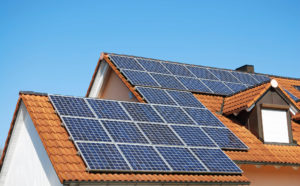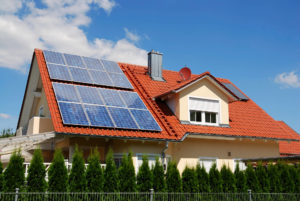Solar panel systems are becoming increasingly popular due to their renewable energy generation capabilities. However, ensuring the safe and efficient operation of these systems is paramount. One critical component that contributes to the safety of solar installations is the solar panel disconnect switch. This comprehensive guide will explore the ins and outs of solar panel disconnect switches, their various types, the importance of proper sizing, rapid shutdown capabilities, installation, and maintenance practices.
Contents
- 1 Key Takeaways
- 2 Solar Panel Disconnect Switch Basics
- 3 Types of Solar Panel Disconnect Switches
- 4 Importance of Properly Sized Disconnect Switches
- 5 Rapid Shutdown and Solar Panel Disconnects
- 6 Grid-Tied Solar Systems and Disconnecting
- 7 Solar Panel Disconnect Switch Installation and Maintenance
- 8 Experience Solar Excellence with Us!
- 9 Conclusion
- 10 FAQ
Key Takeaways
- Solar panel disconnect switches, including DC and AC disconnects, are vital safety mechanisms in solar PV systems that interrupt the flow of DC or AC power between solar panels, inverters, and the electrical grid.
- Proper sizing of disconnect switches is essential to ensure efficient operation and safety in the solar system.
- Rapid shutdown capabilities in disconnect switches enhance emergency safety by quickly halting power output from solar panels during critical situations.
Solar Panel Disconnect Switch Basics
Solar panel disconnect switches, DC and AC disconnects are essential safety mechanisms in solar photovoltaic (PV) systems. Their primary function is to interrupt DC (direct current) or AC (alternating current) power flow between the solar panels, inverters, and the electrical grid. These switches are vital in emergencies, system maintenance, or when homeowners must disconnect their solar system from the grid.
Types of Solar Panel Disconnect Switches
DC Disconnect Switches
DC disconnect switches are specifically designed to interrupt the flow of DC power generated by solar panels. They are typically installed between the solar panels and the charge controller or inverter. When the switch is opened, it safely interrupts the DC circuit load, allowing for safe maintenance or troubleshooting of the solar system.
The National Electrical Code (NEC) mandates the installation of a DC disconnect to ensure the safety of homeowners, installers, and firefighters. A DC disconnect switch in place enables quick and safe disconnection from the solar power output when required.
AC Disconnect Switches
On the other hand, AC disconnect switches are responsible for interrupting AC power flow between the inverter and the utility meter or service panel. They are installed on the AC side of the solar system, typically inside the home or building.
AC disconnects are crucial for protecting homeowners and electrical workers during maintenance or emergencies. When the AC disconnect is opened, it effectively isolates the solar power system from the electrical grid, preventing any potential backfeeding of power.

Importance of Properly Sized Disconnect Switches
Selecting the correct size of disconnect switches for your solar system is crucial for efficient operation and ensuring the safety of your solar installation. The size of the disconnect switch should match the capacity of the solar panels and inverters. Undersized disconnect switches can cause excessive heat buildup and may not be able to handle the load size, leading to premature wear or failure.
Conversely, oversized disconnect switches may result in higher costs without offering any additional benefits. Working with a qualified solar installer is essential to determine the appropriate size of disconnect switches for your specific solar PV system.
Rapid Shutdown and Solar Panel Disconnects
In recent years, rapid shutdown requirements have been introduced to enhance the safety of solar PV systems during emergencies. Rapid shutdown mechanisms ensure that the solar panels cease to produce power when the disconnect switches are activated.
In an emergency or when maintenance is required, rapid shutdown capabilities enable the solar system to quickly interrupt power output, reducing the risk of electrical hazards to firefighters and personnel. Compliance with rapid shutdown regulations is essential for homeowners to maintain the safety and integrity of their solar installations.

Grid-Tied Solar Systems and Disconnecting
Grid-tied solar systems are the most common type of solar installation, allowing homeowners to connect their solar power systems to the electrical grid. However, during certain situations, such as power outages or maintenance, it becomes necessary to disconnect the solar panels from the grid.
In such cases, the AC disconnect is crucial in safely interrupting the power flow between the inverter and the electrical grid. This action ensures that the solar power system is isolated from the grid and prevents any potential backflow of electricity, enhancing the homeowner’s and electrical workers’ safety.
Solar Panel Disconnect Switch Installation and Maintenance
Proper installation and regular maintenance of solar panel disconnect switches are essential for your solar PV system’s reliable and safe operation. It is crucial to engage a qualified solar installer for the installation process, as they have the expertise to ensure all components are correctly connected and comply with safety regulations.
Routine maintenance checks should be conducted to inspect the disconnect switches for any signs of wear, damage, or corrosion. Additionally, homeowners should familiarize themselves with the proper procedures for disconnection and reconnection of their solar panels, especially during emergencies or maintenance activities.
Experience Solar Excellence with Us!
Trust in Solar Panels Network USA, where our seasoned experts deliver top-quality solar solutions for homes and businesses nationwide. With a legacy of countless successful installations and a commitment to sustainable energy, we’re your reliable partner in the solar journey. Ready for a brighter, eco-friendly future? Call us now at (855) 427-0058 and harness the power of the sun!
Conclusion
Solar panel disconnect switches are fundamental components of solar PV systems that enhance both safety and efficiency. With the correct sizing, rapid shutdown capabilities, and proper installation and maintenance practices, homeowners can rest assured that their solar installations are operating optimally and safely. Investing in reliable and compliant disconnect switches is not just a legal requirement; it is an important safety measure that protects homeowners, installers, and electrical workers, ensuring a seamless and secure solar energy experience.
FAQ
Do you need a solar disconnect?
A solar disconnect is a crucial safety component in solar PV systems. It allows homeowners and installers to safely interrupt the power flow between solar panels, inverters, and the electrical grid during emergencies, maintenance, or any situation requiring disconnection.
Where is the solar disconnect switch?
The location of the solar disconnect switch depends on its type. DC disconnect switches are typically installed between the solar panels and the charge controller or inverter. On the other hand, AC disconnect switches are usually located on the AC side of the solar system, inside the home or building, between the inverter and the utility meter or service panel.
What does a solar switch do?
A solar switch or panel disconnect switch interrupts a solar PV system’s DC or AC power flow. When activated, it effectively disconnects the solar panels from the rest of the system, including inverters and the electrical grid. This action ensures the safety of homeowners, installers, and electrical workers during maintenance, emergencies, or any situation requiring disconnection.
About the Author
Solar Panels Network USA stands at the forefront of solar energy solutions, driven by a team of seasoned solar engineers and energy consultants. With over decades of experience in delivering high-quality solar installations and maintenance, we are committed to promoting sustainable energy through customer-centric, tailored solutions. Our articles reflect this commitment, crafted collaboratively by experts to provide accurate, up-to-date insights into solar technology, ensuring our readers are well-informed and empowered in their solar energy decisions.

